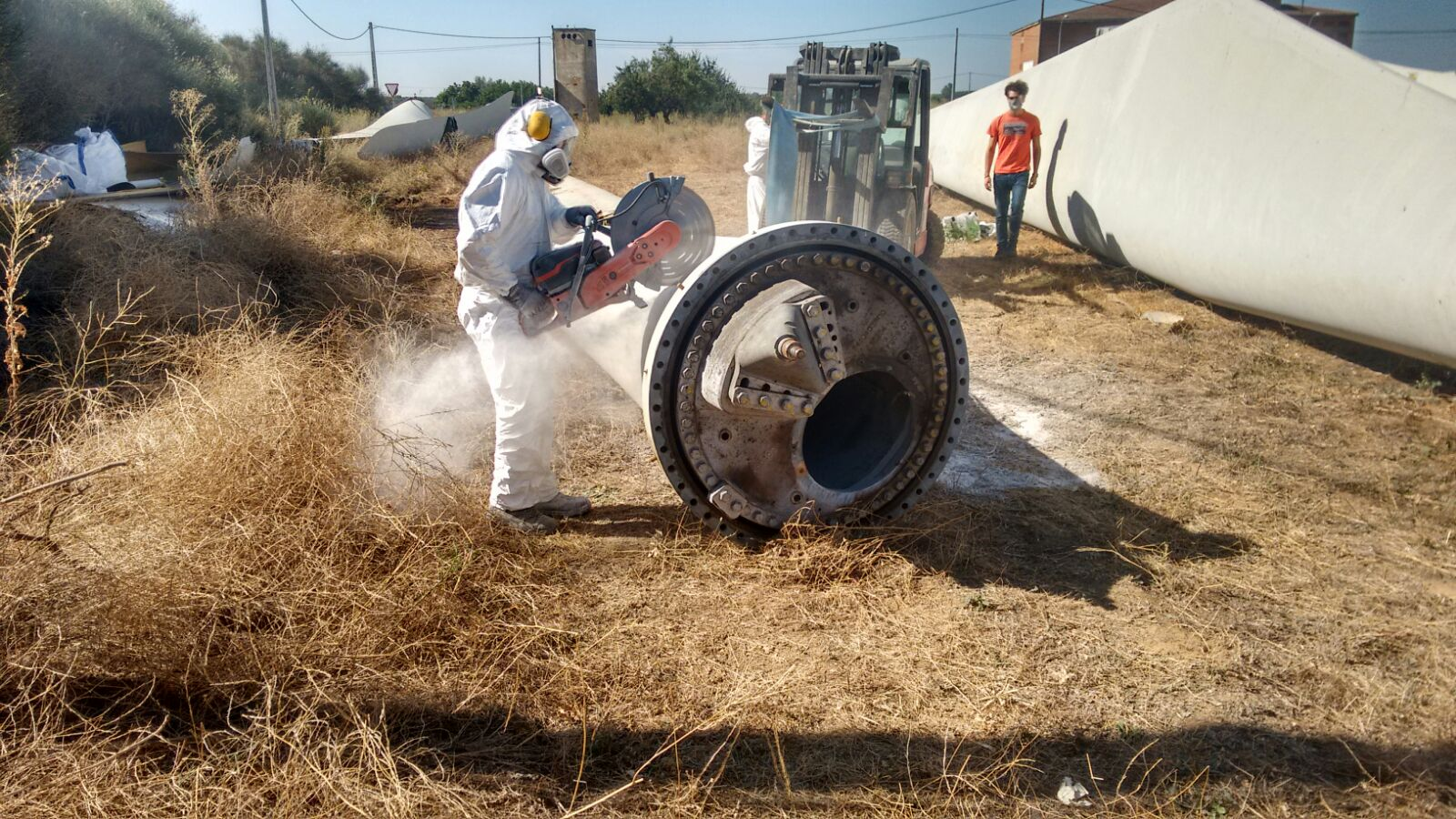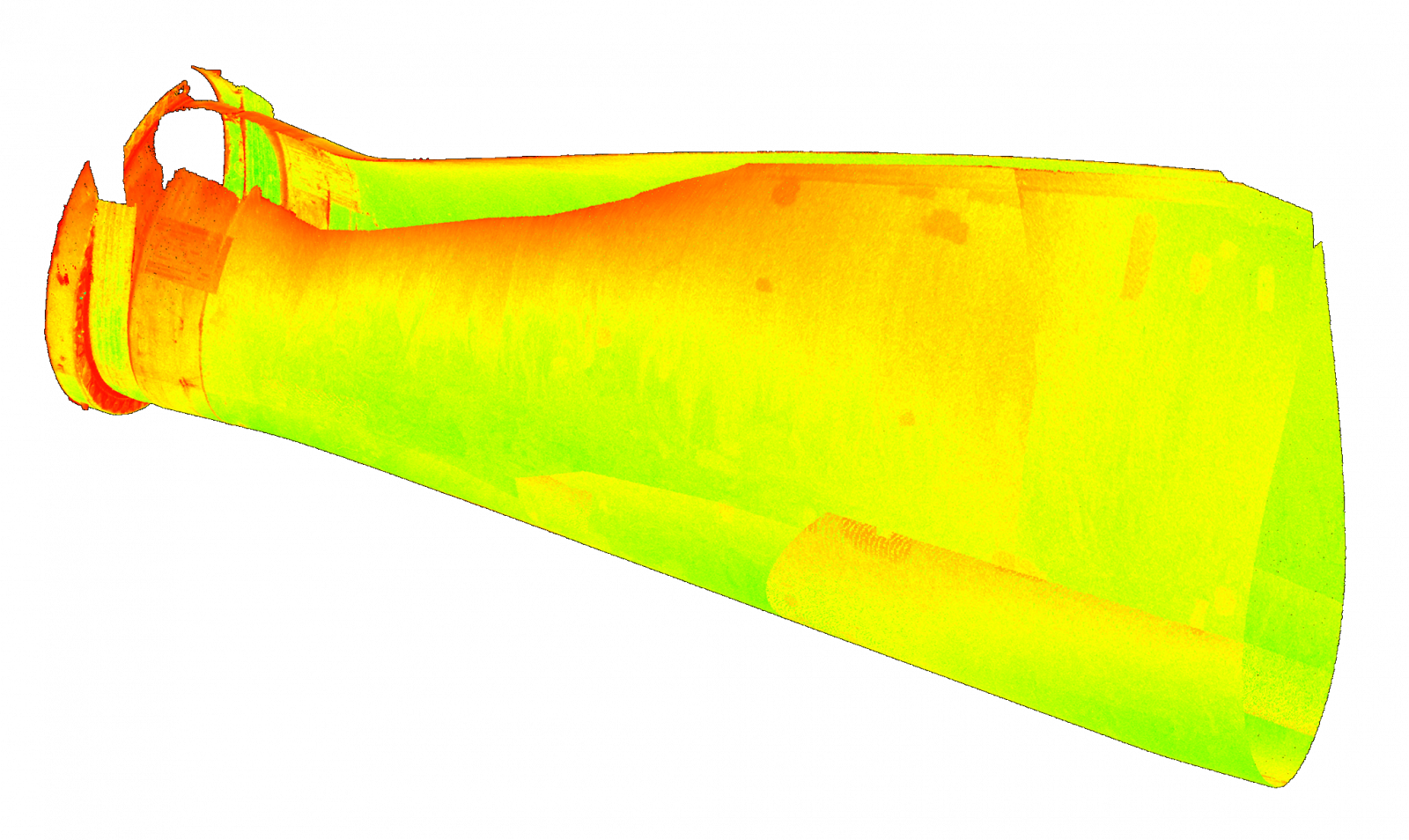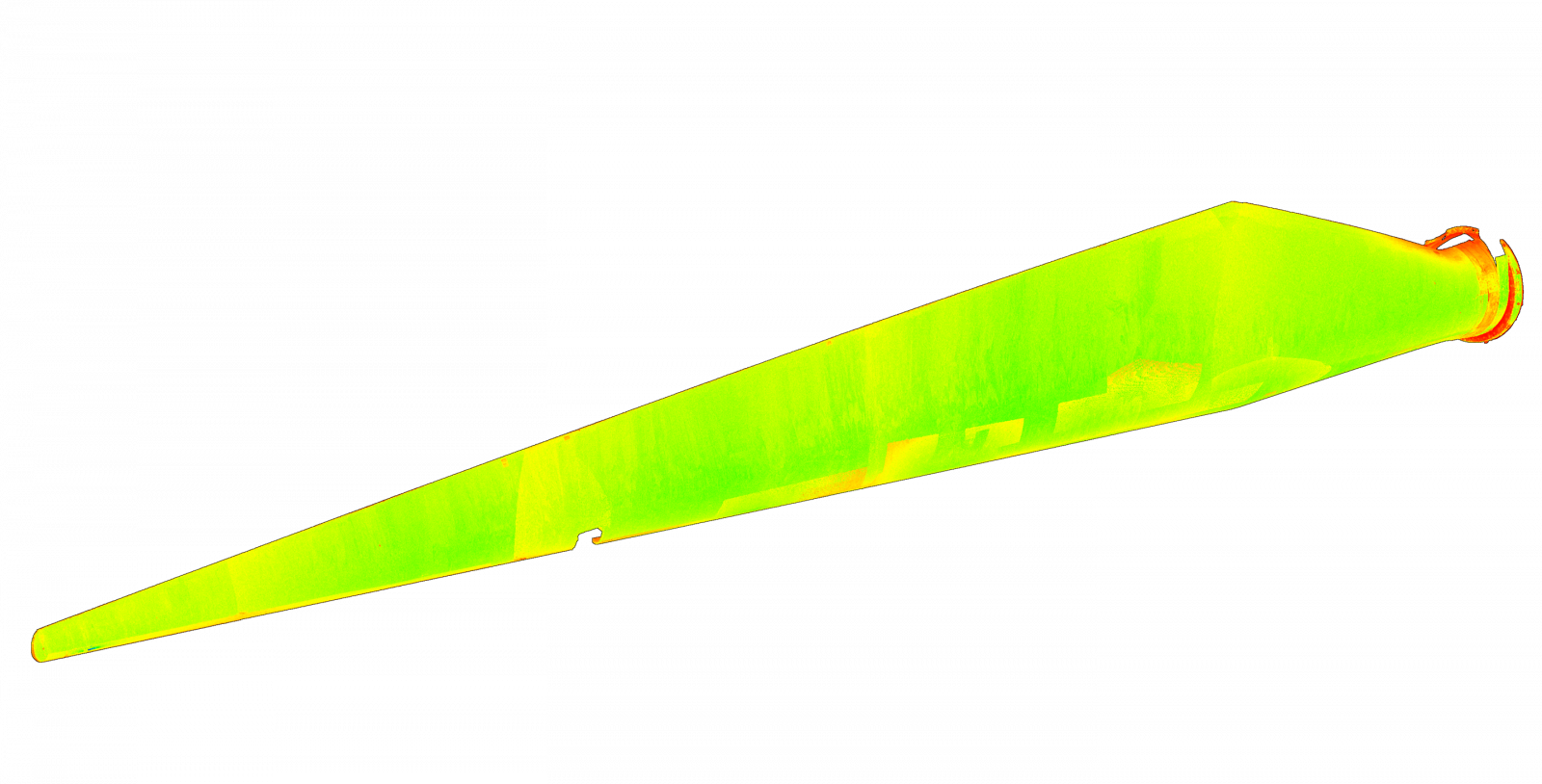Aeroelastic model generation by reverse engineering
BACKGROUND
SOLUTE combines their experience in creating aeroelastic models of wind turbines for manufacturers with knowledge of the specific techniques used for reverse engineering an aeroelastic model without any data being provided by the manufacturer. We part from a situation in which there are no drawings, technical specifications, material properties or the wind turbine control logic.
In these cases we draw on scans, research of the technical specifications of the components, measurements and observation of SCADA data to infer the behaviour of the machine and its mechanical properties. All of this is focused on obtaining the aerodynamic loads of the turbine with the aim of extending its service life or conducting an analysis of components requiring design modifications as a result of recurrent defects.
The generation of aeroelastic models using reverse engineering arises from the need to define this type of highly reliable physical/mathematical model at a probably more competitive price compared to the price quoted by the manufacturer, who, for strategic reasons, is normally not willing to provide aeroelastic models to their customers.
The problem that is solved is that load information about the wind turbine is normally not available to their owners to be able to conduct any type of mechanical / structural calculation aimed at conducting studies that allow extending the operation of the farms beyond the years they were designed for, as well as develop specific maintenance strategies for each component, resulting in higher operating and maintenance costs savings.
RESULTS
The expected results are an aeroelastic model of the wind turbine in GH Bladed, as well as the parameters report used for generating this model and the report of a load loop in accordance with standard IEC64100-1.
EXPERIENCE
Since approximately 2010-2011, SOLUTE creates and works with aeroelastic models for wind turbine manufacturers.
A reverse engineering process has been developed and internally applied for an R&D project that has allowed establishing and developing the techniques to be applied.
High precision scanners are used such as the BLK360 from Leica, to define the shapes of the main components and structures as well as the blade or the frame, using Cyclon software to process the scans.
METHODOLOGY
The aeroelastic software that is most commonly used is GH Bladed and Gencas, a tool developed by SOLUTE that quickly defines the load cases based on standard IEC61400-1. High precision scanners are used such as the BLK360 from Leica, to define the shapes of the main components and structures as well as the blade or the frame, using Cyclon software to process the scans.
Using manual measurement tools such as the ultrasound thickness meter and the laser distance meter, we obtain the geometric characteristics of the tower. Additionally, with SOLIDWORKS, a 3D reconstruction is created of the nacelle to obtain the weights and centres of gravity of the different components.
Likewise, based on the FEM of the blade, previously scanned, we obtain the distribution of mass and rigidities using BECAS (Beam Cross section Analysis Software), developed by the Technical University of Denmark (DTU). Based on the geometry of the blade, the aerodynamic profiles are obtained and using OpenFOAM, we obtain its aerodynamic coefficients.
Using Simulink, the wind turbine control system is established in the SCADA database and if greater accuracy of the control system is required, operational data may be monitored.
All the compiled information is used as the basis for attaining the parameters that will define the turbine in an aeroelastic model in GH Bladed.
Others
Hydraulics: turbomachines
Turbomachinery is present in many engineering sectors, including electrical power generation, using gas or wind turbines, propulsion in air vehicles or different industrial processes with turbo-compressors and/or hydraulic pumps.
Wind
Tools for handling and transport in the wind sector
Engineering of elements and assemblies to guarantee a proper installation and transport in the many demanding scenarios that occur in the wind sector


